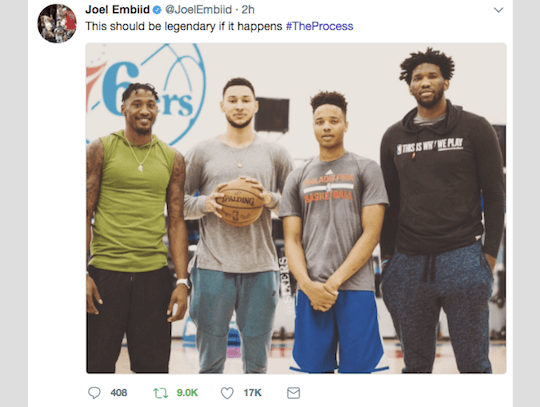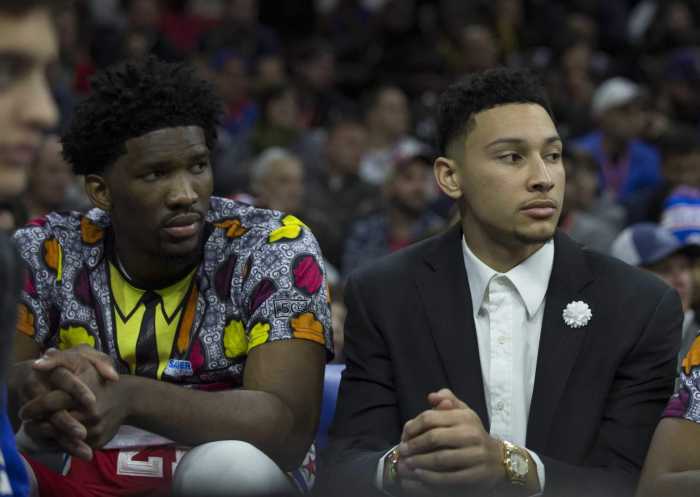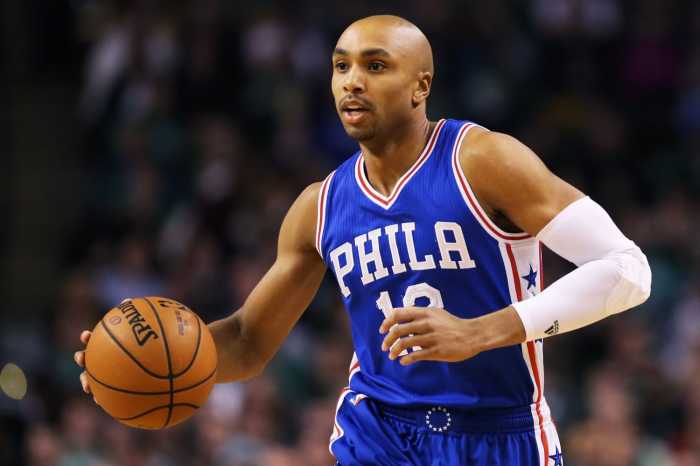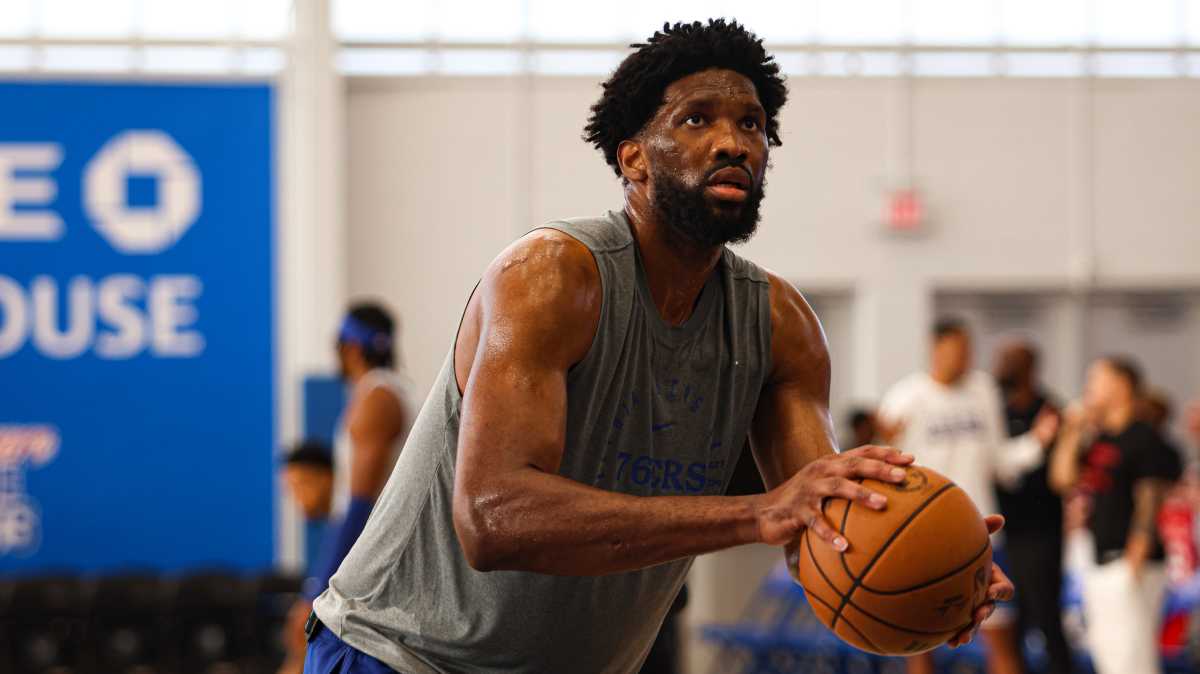By trading for the Celtics first overall pick and selecting Markelle Fultz, the 76ers became the eighth team in NBA (or BAA) history to make the first pick in the draft two years in a row. At face value, such a happening remains a pretty promising sign for the future, if not a brutal commentary on the present. It hasn’t always been championships and champagne for the teams that previously found themselves in this position however. Their experiences truly run the gamut, from folding out of existence to multiple championships. We feel safe guaranteeing the Sixers’ experience will fall somewhere on this spectrum.
1948-49 Providence Steamrollers: Andy Tonkovich, Howie Shannon
The second and third draft (technically done by the Basketball Association of America) in NBA history saw the same team trot up to the podium. The 1947-48 Steamrollers were particularly infamous for winning just six games — an NBA record that still stands.
This story doesn’t end well: the Steamrollers folded after the 1949 season when the BAA became the NBA and Tonkovich and Shannon were both out of the league within one more season.
1953-54 Baltimore Bullets: Ray Felix, Frank Selvy
The story gets a little better here. The Bullets, winners of the 1948 Championship, survived the merger that formed the NBA but collapsed and folded in 1954. They also had the first selection in the 1951 draft, but it was apparently not enough. When the team selected Selvy out of Furman, he was (and remains) the only division one college player to score 100 points in a game.
Both Felix and Selvy would become All-Stars, though only Felix for the Bullets. He also won Rookie of the Year. Felix and Selvy would later reunite as members of the Jerry West Lakers, where they lost the 1962 NBA Finals.
1959-60 Cincinnati Royals: Bob Boozer, Oscar Robertson
Now we’re at least no longer going to hear about teams immediately leaving the league following their selections, though we do have the notoriously nomadic Kings franchise at hand. Freshly relocated to Cincinnati from Rochester, a promising Royals team was gutted by the tragedy of Maurice Stokes. While the teams fortunes tumbled to these draft picks, the selection of Robertson (from the University of Cincinnati) turned them around for the first half of the 1960s.
Eventually, Boozer and Robertson won a championship together in Milwaukee in 1971. Boozer became an NBA All-Star (though not with the Royals) and Robertson made the All-Star team 12 times altogether. He won the 1964 MVP, made the Hall of Fame, and his most famous achievement remains averaging a triple double for the 1961-62 season: 30.8 points, 12.5 rebounds, and 11.4 assists per game.
1963-64 New York Knicks: Art Heyman, Jim Barnes
The Knicks also had the first overall pick in 1967 (Cazzie Russell.) While they saw success as the fruits of these draft classes — most notable the 1970 NBA title — it wasn’t on the backs of Heyman or Barnes. Both were named First Team All-Rookies but both were also gone by 1966. Heyman went on to a long ABA career.
Much more of the Knicks success was due to their second round pick in 1964: Willis Reed. In addition to Russell the 1967 draft saw Walt Frazier come with the fifth pick and Phil Jackson selected in the second round. These players (along with Russell) formed the backbone of the 1970 Championship team.
1983-84 Houston Rockets: Ralph Sampson, Hakeem Olajuwon
The most successful example on our list is now here. While Sampson won Rookie of the Year and was already a four-time All-Star before injuries caused a trade and wrecked his career, it was Olajuwon who brought the team two titles in the mid-90s and won an MVP and two Defensive Player of the Year awards on his way to the Hall of Fame.
In 1986, while both Sampson and Olajuwon were still in Houston, they dethroned the Lakers as Western Conference Champions and lost to the famous 1985-86 Celtics in the finals in six games. 1994 saw Olajuwon win MVP, Defensive POY, and Finals MVP while the Rockets won their first ever title over the Knicks. The following year they defended their crown against the Magic. Which, speaking of…
1992-93 Orlando Magic: Shaquille O’Neal, Chris Webber
The Magic made the 1995 Finals on the back of the two players they wound up with from the 92 and 93 drafts. In 1993 they made Chris Webber the first pick before immediately trading him for Penny Hardaway (the third pick) and three more picks. Webber would make five All-Star teams of his own, but it’s hard to argue with the immediate results Orlando saw.
Michael Jordan’s resurgent Bulls owned the East after 1995, and when O’Neal left for the Lakers where he would win three titles (and one more in Miami) and an MVP (and three finals MVPs) on his way to the Hall of Fame the Magic were left to Hardaway, who struggled through injuries, but still managed to make the All Star game five times.
2013-14 Cleveland Cavaliers: Anthony Bennett, Andrew Wiggins
The most recent occurrence on this list is the weirdest as well. Neither player is a Cleveland Cavalier, and Bennett is already out of the league, but Cleveland has made three straight finals appearances and won one title since selecting these players. Obviously, it’s due to the selections coinciding with Lebron James’ decision to return home. Their 2011 first overall pick, Kyrie Irving, has helped as well.
Once Wiggins was drafted, he and Bennett were traded to the Timberwolves in the deal that saw Kevin Love join the Cavaliers. The Sixers were part of the three-team deal and sent Thaddeus Young to Minnesota. They obtained the draft pick that became Timothé Luwawu-Cabarrot. Unlike Bennett, Wiggins has been a success. He won Rookie of the Year and has improved his scoring each year — to 23.4 points per game in 2016. But his personal success pales in comparison to the Cavaliers achievements since picking him in the draft: three fifty win seasons and three finals appearances in three years.
There you have it. Let’s hope the Sixers’ experience with Ben Simmons and Fultz is a little more Houston Rockets, a little less Providence Steamrollers.




























